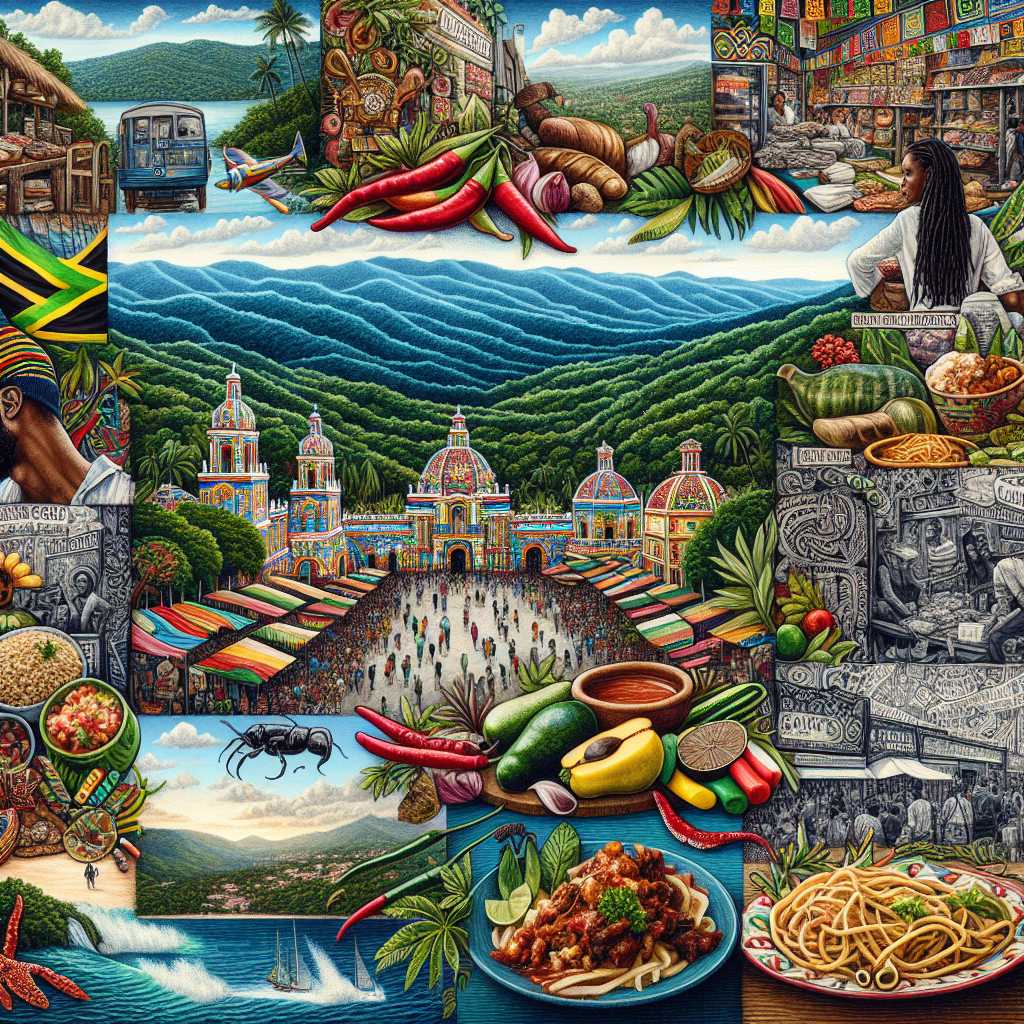Jamaica vs Mexico: A Comparative Overview of Two Prominent Latin American Nations
In the spectrum of Latin American and Caribbean states, Jamaica and Mexico stand out for their unique cultural identities, historical background, and present-day socio-economic landscapes. This article provides a comprehensive examination of the various aspects that distinguish these two nations, including geographical positioning, economic performance, tourism, cultural contributions, diplomatic relations, and more.
Geographical Positioning and Environment
Jamaica: An Island Nation with Diverse Terrain Jamaica is the third-largest island in the Caribbean Sea. Spanning roughly 10,991 square kilometers, it boasts a varied topography with coastal lowlands, a limestone plateau, and the Blue Mountains — the highest range on the island. Its climate is tropical, with warm, humid conditions predominating the coastal regions and temperate weather in the higher inland areas. Mexico: A Country of Contrast and Splendor In contrast, Mexico covers approximately 1.96 million square kilometers of territory and features vast geographic diversity. From the sun-soaked beaches of Cancun to the majestic Sierra Madre mountain ranges and from arid deserts in the north to the lush rainforests in the southern state of Chiapas, Mexico’s environmental offerings are expansive. Its larger landmass contributes to variations in climate across different regions of the country. Historical Roots
Jamaica’s Colonial Heritage Colonized first by Spain in 1494 and then by England in 1655, Jamaica reflects a mixture of heritage visible in its language, culture, and customs. The traumatic history of slavery and plantation economy has left a lasting impact on the social fabric of the nation. Mexico’s Pre-Colonial & Colonial Legacies Mexico’s complex history is marked by advanced pre-Hispanic civilizations like the Maya and Aztecs, followed by Spanish colonization in the early 16th century. The mixture of native traditions with colonial influences created Mexico’s rich and diverse cultural heritage that remains evident today. Political Systems and Governments
Democracy in Jamaica Jamaica is a parliamentary democracy and operates under a constitutional monarchy framework with the British monarch as the head of state represented locally by a governor-general. It has a bicameral legislature known as ‘The Parliament of Jamaica,’ consisting of an appointed Senate and an elected House of Representatives. Federal Republic of Mexico In comparison, Mexico is a federal democratic republic with a president who is both head of state and government. The nation is composed of 31 states and one Federal District (Mexico City). Its government operates under a federal system divided into executive, legislative, and judiciary branches. Economic Practices and Trade
Jamaica’s Economy: Opportunities amidst Challenges The Jamaican economy relies significantly on services such as tourism and remittances from overseas, which account for a substantial part of its GDP. The nation has also been involved in identifying markets for its primary agricultural products such as sugar cane, bananas, and rum. The challenge of small-market economies remains compelling for Jamaica’s future growth and development efforts. Mexico’s Economy: From Manufacturing to Exports Mexico boasts one of Latin America’s largest economies with extensive manufacturing capabilities — boosted partly by the North American Free Trade Agreement (NAFTA), which reshaped its trade relations primarily with the USA and Canada. It benefits from plentiful natural resources, including oil — a significant foreign exchange earner. Cultural Gems: Music, Art, Food
Rich Melodies From Jamaica The culture of Jamaica is vibrantly syncretic with music at its core — reggae, fostered by unique talents like Bob Marley, is recognized around the globe. Other popular contributions include ska, dancehall, and dub music genres. Mexican Cultural Diversity Mexico’s contribution to arts encompasses renowned muralists like Diego Rivera and Frida Kahlo. The nation’s cuisine — characterized by flavorsome dishes such as tacos and enchiladas — has made waves internationally. Tourism: Bright Spots in National Economies
Tourism in Jamaica: Beaches and Beyond Tourism is central to Jamaica’s economy; it’s famous for picturesque beaches such as Negril Beach along with historical plantation homes that offer direct insights into its past. Mexico’s Tourist Mecca Similarly, tourism is a vital industry for Mexico — offering historical sites like Teotihuacan pyramids along with bustling urban experiences in cities like Mexico City. Foreign Policy Initiatives
Jamaica’s Outreach:Caribbean Relations & Beyond Jamaica engages in active diplomacy within Caribbean fora (such as CARICOM) and has sought mutually beneficial partnerships globally through various trade agreements. Mexico’s Diplomatic Strides A key player on the international stage within Latin America, Mexico holds significant trade agreements beyond NAFTA (now USMCA) with nations worldwide to facilitate economic symbiosis. Notes
Jamaica gained independence from Britain on August 6, 1962. Mexican War of Independence lasted from 1810 until 1821. As per World Bank data from recent years before 2023, tourism accounted for about 30% of Jamaica’s GDP. Mexico was ranked among world’s top 10 most visited countries according to UNWTO statistics prior to 2023. Image Description An illustrative collage featuring images symbolizing Jamaica and Mexico – including a view of Jamaica’s Blue Mountains, vibrant market scenes in both nations, iconic music legends from Jamaica beside striking Mexican mural artistry with insets highlighting popular local dishes from both countries.
